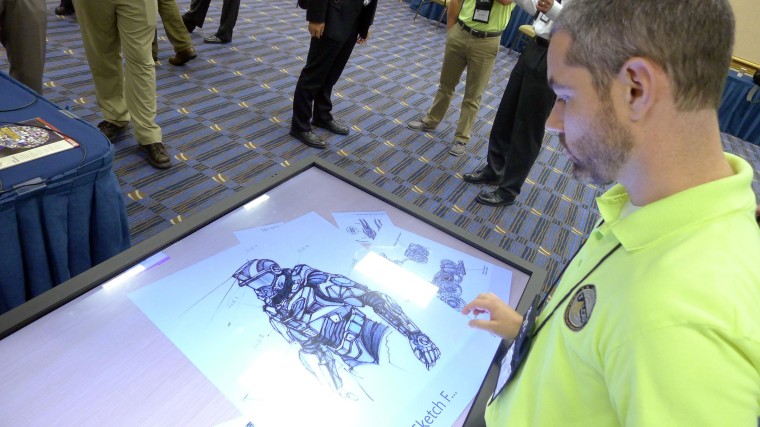Zombies, aliens and teaching different types of “monkeys” how to do things are some of the big themes in Republican Sen. Tom Coburn’s 2014 “Wastebook” released Wednesday.
The fifth annual Wastebook chronicles 100 of the silliest uses of taxpayer dollars. The Oklahoma conservative says he has identified $25 billion in wasted government funds in what will be his last such book before he retires at the end of the Congressional session. (Some of the projects do have a more meaningful purposes than Coburn presents, but he focuses most on the absurdity.)
“The problem is not just what Washington isn’t doing, but what it is doing,” Coburn writes.
Here is a look at 7 interesting ways the government has spent taxpayer dollars.
1. “Zombie in Love,” a musical
Cost: $10,000
“While most zombies want to eat your brains, there’s one that wants to steal your heart. His story is told in a taxpayer-funded stage production,” Coburn writes.
The National Endowment of the Arts gave $10,000 to the Oregon Children’s Theatre for the production, a family-friendly play with the message that the right person will overlook your quirks -- even if it means putting toenails on your pizza like the lovesick zombie star of the show.
2. Study to see if monkeys share humans irrational belief in gambling streaks
Cost: $171, 000
“It turns out humans are not the only species looking for ‘Big money, no whammies!’” Coburn writes.
The National Science Foundation supported the study of gambling monkeys to see if they share humans' penchant for incorrectly believing in hot and cold streaks at the casino. It turns out they do, and researchers said the study could help human understanding of free will and gambling addiction.
“But taxpayers are likely to go totally bananas that NSF is monkeying around with federal research dollars,” the Wastebook quips.
3. NASA book on human and alien communications problems
Cost: $392,000 (for NASA history program)
What will it be like if human civilization makes contact with extraterrestrials? There is a NASA eBook for that.
The book talks about the potential communication problems humans and aliens could one day have, if they ever meet. It also talks about the days when the government funded programs to search for aliens.
“Unfortunately, yearning for the days of yore and producing books on communicating with E.T. cannot change the fact NASA cannot even get its own astronauts into space,” according to the Wastebook.
4. Coast guard party patrol
Cost: $100,000 or more
If you’re looking to keep the riff raff out of your private yacht or beach party, the Coast Guard may be able to help you out for free, Coburn writes.
Similar to how police enforce safety zones for public events like parades and festivals, the coast guard does the same for events on or near the water. The difference, though, is that the Coast Guard does not seek compensation and taxpayers are left with the bill, the report states, citing the Associated Press.
5. Development of a real life ‘Iron-Man’ suit
Cost: $80 million
The Department of Defense is attempting to develop a super-armor suit that it has sometimes referred to as “the Iron Man suit.” The problem, Coburn writes, is the suit could weigh up to 400 pounds and cost much more than the $80 million price tag.
6. Texting drinkers not to drink
Cost: $194,090
The National Institute on Alcohol Abuse and Alcoholism gave researchers nearly $200,000 this year to study whether a text message can decrease how much a person drinks. Some study participants get daily texts around 3 p.m. reminding them of the effects of heavy drinking.
7. Synchronized swimming for sea monkeys
Cost: $307,524
“With the financial support of three government agencies, researchers...essentially choreographed a laser guided synchronized swim team of Sea Monkeys as part of a study to measure the swirl created by their collective movements,” Coburn writes.
The reason behind the study is that some research suggests the swimming motion of sea monkeys and similar aquatic life can influence circulation of the water and create trillion of watts of power. Other oceanographers, Coburn points out, are skeptical.
“With kits available online and many toy stores, you can try to train your own team of synchronized swimming Sea Monkeys for as little as $12,” he writes.
